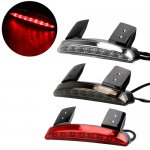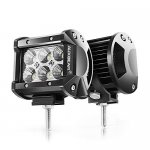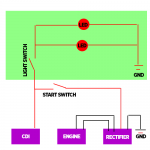Parallel is best option and less load on the circuit.
that's unfortunately false...
parallel increases current and thus load...
anywhoooo..
12V light needs to be wired parallel on a 12V system (no matter if battery or through a 12V regulated & rectified alternator)
BUT here's the point...
For the OP's problem, wiring 3 led lights off 12v, in series, is probably not a good idea, as 4v at each light is no good.
3leds at 12V is actually nice...
a common [white] LED has a voltage drop of around 4V each (3.6 ish) and that'd work out just nicely then.. with just a tiny resistor.
'lights' is what may crack that pot... depending on the internal setup of the individual LEDs in a light.
many (mostly cheap ones) LED lights you buy off amazon as 12V .. do not necessarily need 12V to run at full power..
in fact most actually have a voltage dropping resistor inline to keep the LEDs alive from that "overvoltage" of 12V.
if you remove those you more often than not end up with a setup that requires either 4 or 8 volts
And that's where you can adjust to your needs...
a 4V requirement and a small resistor to step up to a 6V and you can wire the two sets in series w/o any issue (and w/o loosing brightness)
even an 8V light can be wired in series with a 4V rear for example without any additional resistor.
but to know for sure you'd need to take a look inside.
count the actual LEDs and how they're wired up (parallel, series, sp-grid-array?)
So if you want to do some extra math... and a bit of soldering...
you can very likely wire them in series after you modified them.
(BONUS improved power consumption by 100% brightness LEDs)
'sid



